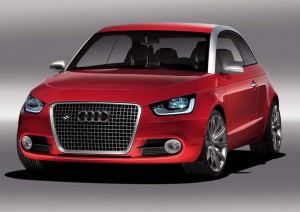Auto industry officials often talk about adopting Silicon Valley’s rapid pace of innovation, and nowhere is that more critical than in the growing world of onboard electronics.
Consumer electronics companies measure product lifecycles in months, not years, and open architecture software is a key reason this is possible. Traditionally, automakers have stuck with proprietary technologies which may have to be completely rewritten or redesigned from one model to the next.
But Delphi Corp., the big supplier that has largely shifted from old-style parts to high-tech electronics, is racking up a big score as it begins to supply a new open-source infotainment system to Audi for the German maker’s new luxury minicar, the A1.
“The open, well-structured software architecture allows Audi to configure its vehicles’ infotainment platforms with simple software upgrades and offer more than 20 variations of our new infotainment platform including radio concert with navigation,” said Peter Steiner, head of Audi Infotainment Electrics/Electronics.
Steiner said the flexible design of Delphi’s system helps to differentiate vehicles while fulfilling requirements for radio reception, user connectivity and navigation in one package with phase diversity dual-tuner reception and the capability of adding different digital tuner modules such as digital audio broadcast, or DAB, and different types of connectivity.
Even before it finally emerged from its unexpectedly long slog through Chapter 11 protection, Delphi was moving away from classic metal-bending parts manufacturing and into the high-tech world. The company’s focus is now on several key areas of growth: safety, emissions and infotainment, though there are plenty of other less obvious areas where advanced electronics could win the company new contracts.
Beth Schwarting, general director, Electronic Controls, Delphi Electronics & Safety, said Delphi’s key fob technology and custom apps enable information exchange between drivers and their vehicles.
“Delphi is committed to developing innovative products that are easy to use and provide exceptional value to our customers,” Schwarting, said. “Our new generation of fobs offers features that are not currently available in the market,” such notifying drivers when they need to refuel or get an oil change, she said.
Robert Schumaker, Delphi electronics general director of advanced product and business development, also noted, during a recent session with reporters, that Delphi is working on new technology such as a center console that utilizes information from a driver or a passenger’s “smart phone” to bring navigation, entertainment and communications features and any number of “apps,” into the front seat.
Google set the stage for a revolution in in-vehicle navigation systems when it unveiled a navigation application for smart phones, Schumaker said. Since information from Google Maps can be quickly download to a smart phone, onboard navigation systems are basically becoming redundant.
Thus Delphi is putting the finishing touches on a system, which should be available by 2012, built around a smart phone cradle that puts Google Maps on screen in the center stack for a relatively small cost, according to Schumaker, a former nuclear physicist has been with Delphi since 1993. It also can download the music loaded on a smart phone.
Schumacher said Delphi is working on several other features such as a forward warning collision system that bolster the driver’s reaction time, reducing the potential for injury or property damage.
Another system recognizes traffic signals and classifies traffic signs by using an intelligent forward-view camera, Schumaker said.
“There will be all kinds of cameras on cars in the future,” he predicted
With the cost of cameras for automotive use dropping dramatically, cameras also could replace side mirrors. Using a camera instead of a mirror also allows for a vehicle redesign that put the monitor just behind the vehicles front or A-pillar dramatically reducing the vehicles drag, which influence fuel-efficiency.
While the elimination of sideview mirrors would require regulatory approval, “The savings are significant so it’s also a green technology,” he said.

